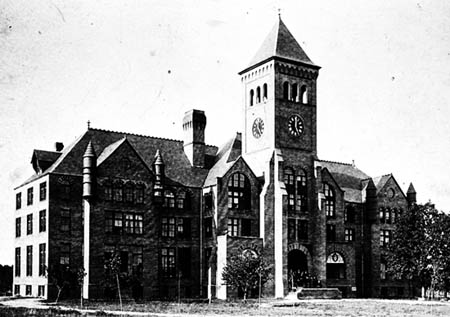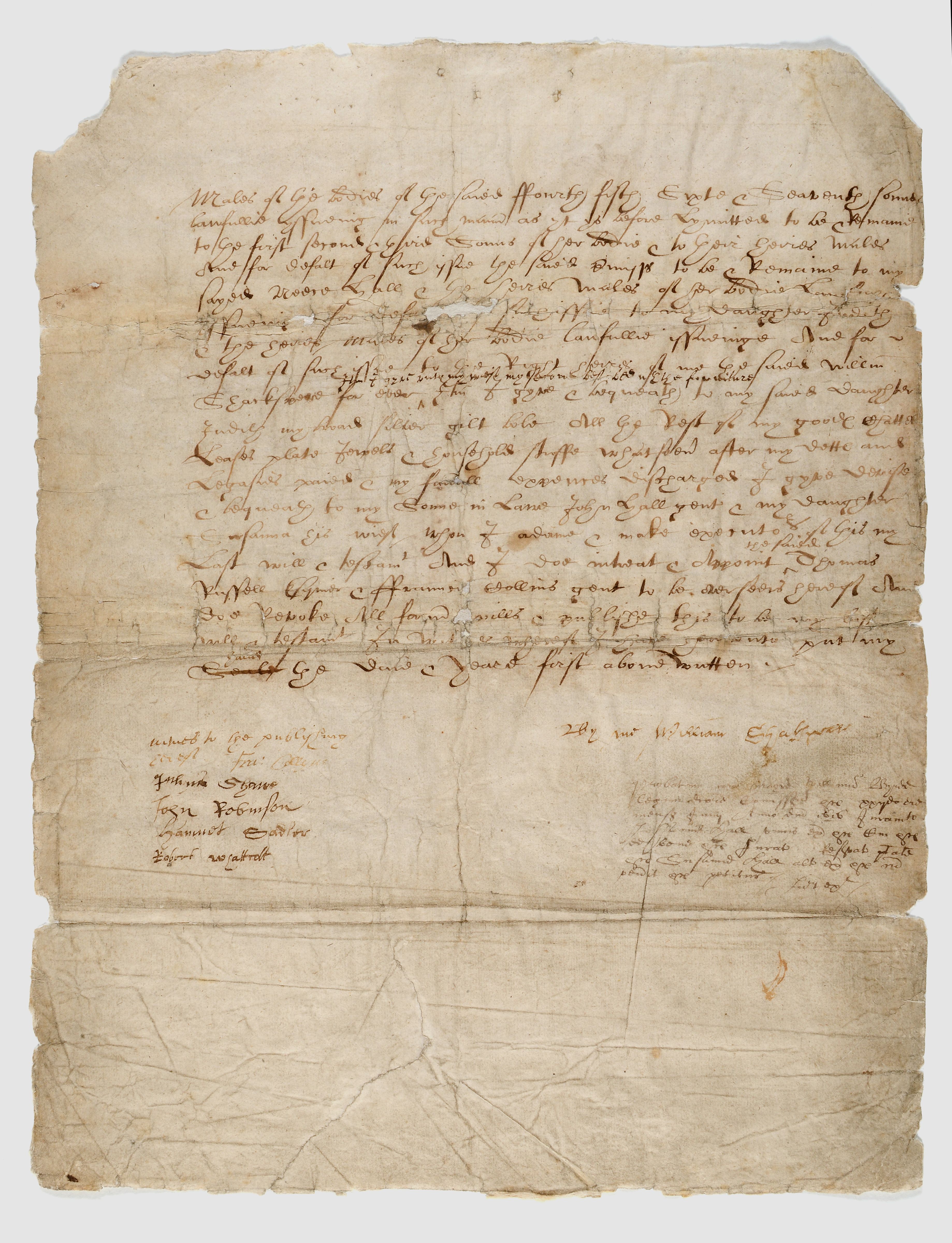|
Lectionary 1623
Lectionary 1623, designated by ℓ ''1623'' in the Gregory-Aland numbering, is a Greek minuscule manuscript of the New Testament, written on 312 parchment leaves (34.5 cm by 23.8 cm). Paleographically it has been assigned to the 11th or 12th century.K. Aland, M. Welte, B. Köster, K. Junack, "Kurzgefasste Liste der griechischen Handschriften des Neues Testaments", Walter de Gruyter, Berlin, New York 1994, p. 310. Description The codex contains Lessons from the Gospels. It is a lectionary (''Evangelistarium''). Written in two columns per page, 23-28 lines per page. History Currently it is housed at the Kenneth Willis Clark Collection of the Duke University (Gk MS 2) at Durham. See also * List of New Testament lectionaries * Textual criticism Textual criticism is a branch of textual scholarship, philology, and of literary criticism that is concerned with the identification of textual variants, or different versions, of either manuscripts or of printed books. ... [...More Info...] [...Related Items...] OR: [Wikipedia] [Google] [Baidu] |
Greek Language
Greek ( el, label= Modern Greek, Ελληνικά, Elliniká, ; grc, Ἑλληνική, Hellēnikḗ) is an independent branch of the Indo-European family of languages, native to Greece, Cyprus, southern Italy (Calabria and Salento), southern Albania, and other regions of the Balkans, the Black Sea coast, Asia Minor, and the Eastern Mediterranean. It has the longest documented history of any Indo-European language, spanning at least 3,400 years of written records. Its writing system is the Greek alphabet, which has been used for approximately 2,800 years; previously, Greek was recorded in writing systems such as Linear B and the Cypriot syllabary. The alphabet arose from the Phoenician script and was in turn the basis of the Latin, Cyrillic, Armenian, Coptic, Gothic, and many other writing systems. The Greek language holds a very important place in the history of the Western world. Beginning with the epics of Homer, ancient Greek literature includes many works of l ... [...More Info...] [...Related Items...] OR: [Wikipedia] [Google] [Baidu] |
Kenneth Willis Clark Collection
The Kenneth Willis Clark Collection of Greek Manuscripts in the David M. Rubenstein Rare Book & Manuscript Library, Duke University contains over one hundred manuscripts — in both roll and codex form — dating from the 9th to the 17th century. The collection as a whole is named in his honor and includes manuscripts collected and donated by Kenneth Clark as well as manuscripts acquired from other sources. Description Professor Harvie Branscomb of the Duke Divinity School bought a manuscript of the Greek New Testament in a Munich bookshop. The manuscript after its arrival at the Library became ''Duke Greek Ms. 1''. This was on 19 February 1931, and it was the beginning of the collection. Although the initial intention was only to collect manuscripts of the New Testament, today the collection contains a variety of materials. [...More Info...] [...Related Items...] OR: [Wikipedia] [Google] [Baidu] |
Greek New Testament Lectionaries
Greek may refer to: Greece Anything of, from, or related to Greece, a country in Southern Europe: *Greeks, an ethnic group. *Greek language, a branch of the Indo-European language family. **Proto-Greek language, the assumed last common ancestor of all known varieties of Greek. **Mycenaean Greek, most ancient attested form of the language (16th to 11th centuries BC). **Ancient Greek, forms of the language used c. 1000–330 BC. **Koine Greek, common form of Greek spoken and written during Classical antiquity. **Medieval Greek or Byzantine Language, language used between the Middle Ages and the Ottoman conquest of Constantinople. **Modern Greek, varieties spoken in the modern era (from 1453 AD). *Greek alphabet, script used to write the Greek language. *Greek Orthodox Church, several Churches of the Eastern Orthodox Church. *Ancient Greece, the ancient civilization before the end of Antiquity. * Old Greek, the language as spoken from Late Antiquity to around 1500 AD. Other uses * ' ... [...More Info...] [...Related Items...] OR: [Wikipedia] [Google] [Baidu] |
Kenneth Willis Clark
Kenneth Willis Clark (1898–1979) was a professor at Duke University, Greek palaeographer; area of interest: Greek New Testament manuscripts, and author of numerous books. Clark catalogued the Greek New Testament manuscripts housed in the libraries of the United States and Canada (1937).T.C. Skeat''A descriptive Catalogue of Greek New Testament Manuscripts in America. By K.W. Clark'' „The Journal of Hellenic Studies”, Volume 59, Issue 1, 1939, p. 179. Clark described and catalogued manuscripts housed in the library of the Saint Catherine's Monastery during his an expedition the Mount Sinai (1952). According to his report two-thirds of that library comprised Greek manuscripts with items in Arabic, Persian, Georgian, Syriac, Ethiopian and Slavonic.Jason Steinhauer''EU Month of Culture Spotlight: Bulgaria''May 2, 2016 He also catalogued the manuscripts housed in the libraries of the Greek and Armenian Patriarchates in Jerusalem (1953). Works * ''Codex 2401 - the Theophanes pra ... [...More Info...] [...Related Items...] OR: [Wikipedia] [Google] [Baidu] |
Textual Criticism
Textual criticism is a branch of textual scholarship, philology, and of literary criticism that is concerned with the identification of textual variants, or different versions, of either manuscripts or of printed books. Such texts may range in dates from the earliest writing in cuneiform, impressed on clay, for example, to multiple unpublished versions of a 21st-century author's work. Historically, scribes who were paid to copy documents may have been literate, but many were simply copyists, mimicking the shapes of letters without necessarily understanding what they meant. This means that unintentional alterations were common when copying manuscripts by hand. Intentional alterations may have been made as well, for example, the censoring of printed work for political, religious or cultural reasons. The objective of the textual critic's work is to provide a better understanding of the creation and historical transmission of the text and its variants. This understanding may lead ... [...More Info...] [...Related Items...] OR: [Wikipedia] [Google] [Baidu] |
List Of New Testament Lectionaries
A ''list'' is any set of items in a row. List or lists may also refer to: People * List (surname) Organizations * List College, an undergraduate division of the Jewish Theological Seminary of America * SC Germania List, German rugby union club Other uses * Angle of list, the leaning to either port or starboard of a ship * List (information), an ordered collection of pieces of information ** List (abstract data type), a method to organize data in computer science * List on Sylt, previously called List, the northernmost village in Germany, on the island of Sylt * ''List'', an alternative term for ''roll'' in flight dynamics * To ''list'' a building, etc., in the UK it means to designate it a listed building that may not be altered without permission * Lists (jousting), the barriers used to designate the tournament area where medieval knights jousted * ''The Book of Lists'', an American series of books with unusual lists See also * The List (other) * Listing ... [...More Info...] [...Related Items...] OR: [Wikipedia] [Google] [Baidu] |
Durham, North Carolina
Durham ( ) is a city in the U.S. state of North Carolina and the county seat of Durham County. Small portions of the city limits extend into Orange County and Wake County. With a population of 283,506 in the 2020 Census, Durham is the 4th-most populous city in North Carolina, and the 74th-most populous city in the United States. The city is located in the east-central part of the Piedmont region along the Eno River. Durham is the core of the four-county Durham-Chapel Hill Metropolitan Area, which has a population of 649,903 as of 2020 U.S. Census. The Office of Management and Budget also includes Durham as a part of the Raleigh-Durham-Cary Combined Statistical Area, commonly known as the Research Triangle, which has a population of 2,043,867 as of 2020 U.S. census. A railway depot was established in 1849 on land donated by Bartlett S. Durham, the namesake of the city. Following the American Civil War, the community of Durham Station expanded rapidly, in part due ... [...More Info...] [...Related Items...] OR: [Wikipedia] [Google] [Baidu] |
Lectionary
A lectionary ( la, lectionarium) is a book or listing that contains a collection of scripture readings appointed for Christian or Judaic worship on a given day or occasion. There are sub-types such as a "gospel lectionary" or evangeliary, and an epistolary with the readings from the New Testament Epistles. History The Talmud claims that the practice of reading appointed Scriptures on given days or occasions dates back to the time of Moses and began with the annual religious festivals of Passover, Pentecost, and the Feast of Tabernacles (Talmud, ''Megilah 32a''). The Mishnah portion of the Talmud, probably finished in the early 3rd century AD/CE (''Anno'' ''Domini'' or Common Era) contains a list of Torah readings for various occasions (Talmud, ''Megilah 32a'') and assumes that these special readings interrupt a regular schedule of Torah readings (Talmud, ''Megilah 29a, 30b''). In addition to these Torah readings, the later Gemara portion of the Talmud also contains assigned annu ... [...More Info...] [...Related Items...] OR: [Wikipedia] [Google] [Baidu] |
Duke University
Duke University is a private research university in Durham, North Carolina. Founded by Methodists and Quakers in the present-day city of Trinity in 1838, the school moved to Durham in 1892. In 1924, tobacco and electric power industrialist James Buchanan Duke established The Duke Endowment and the institution changed its name to honor his deceased father, Washington Duke. The campus spans over on three contiguous sub-campuses in Durham, and a marine lab in Beaufort. The West Campus—designed largely by architect Julian Abele, an African American architect who graduated first in his class at the University of Pennsylvania School of Design—incorporates Gothic architecture with the Duke Chapel at the campus' center and highest point of elevation, is adjacent to the Medical Center. East Campus, away, home to all first-years, contains Georgian-style architecture. The university administers two concurrent schools in Asia, Duke-NUS Medical School in Singapore (e ... [...More Info...] [...Related Items...] OR: [Wikipedia] [Google] [Baidu] |
Walter De Gruyter
Walter de Gruyter GmbH, known as De Gruyter (), is a German scholarly publishing house specializing in academic literature. History The roots of the company go back to 1749 when Frederick the Great granted the Königliche Realschule in Berlin the royal privilege to open a bookstore and "to publish good and useful books". In 1800, the store was taken over by Georg Reimer (1776–1842), operating as the ''Reimer'sche Buchhandlung'' from 1817, while the school’s press eventually became the ''Georg Reimer Verlag''. From 1816, Reimer used the representative Sacken'sche Palace on Berlin's Wilhelmstraße for his family and the publishing house, whereby the wings contained his print shop and press. The building became a meeting point for Berlin salon life and later served as the official residence of the president of Germany. Born in Ruhrort in 1862, Walter de Gruyter took a position with Reimer Verlag in 1894. By 1897, at the age of 35, he had become sole proprietor of th ... [...More Info...] [...Related Items...] OR: [Wikipedia] [Google] [Baidu] |
Paleography
Palaeography ( UK) or paleography ( US; ultimately from grc-gre, , ''palaiós'', "old", and , ''gráphein'', "to write") is the study of historic writing systems and the deciphering and dating of historical manuscripts, including the analysis of historic handwriting. It is concerned with the forms and processes of writing; not the textual content of documents. Included in the discipline is the practice of deciphering, reading, and dating manuscripts, and the cultural context of writing, including the methods with which writing and books were produced, and the history of scriptoria. The discipline is one of the auxiliary sciences of history. It is important for understanding, authenticating, and dating historic texts. However, it generally cannot be used to pinpoint dates with high precision. Application Palaeography can be an essential skill for historians and philologists, as it tackles two main difficulties. First, since the style of a single alphabet in each given lan ... [...More Info...] [...Related Items...] OR: [Wikipedia] [Google] [Baidu] |







